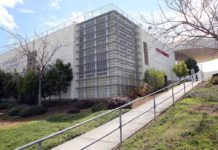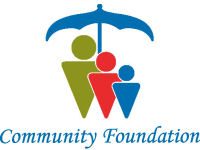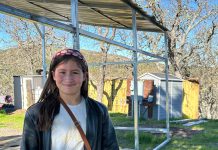San Juan Bautista
– Students in Mayra Flores’ kindergarten classroom at San Juan
School practice counting, their ABC’s, sharing and singing like
most 5-year-olds in the country, with one difference – it’s almost
entirely en español.
San Juan Bautista – Students in Mayra Flores’ kindergarten classroom at San Juan School practice counting, their ABC’s, sharing and singing like most 5-year-olds in the country, with one difference – it’s almost entirely en español.
“We really felt it was time for something like this,” San Juan School Principal Alicia Santana said. “It’s going to benefit all of these students in the long run.”
Flores teaches a Dual Immersion Kindergarten class, which covers regular state standards for kindergarten students but emphasizes fluency in both English and Spanish for all students. Spanish poetry and books about Cesar Chavez adorn the classroom walls, along with colorful papel picado flags and posters with phrases like “We All Smile in the Same Language.”
One-third of the class comprises English learner students – who speak little or no English – one-third are bilingual students, who are fairly proficient in both languages, and one-third are English-speaking students who did not know Spanish upon entering the class. But to a visitor just popping in to class for a few moments, it is nearly impossible to discern which is which.
“We use a lot of physical movement; we sing and dance a lot and it helps them pick up the language pretty quick,” Flores said. “And they seem to be liking it a lot.”
About 80 percent of the instruction takes place in Spanish, and then students switch to another teacher, Anissa Dizon, for their English-language lessons, which take up the remaining 20 percent of the school day. So immersive is the Spanish instruction, in fact, that the students aren’t even supposed to know that Flores speaks English.
“Each year we’re going add a little more English instruction, and the goal is that by the time they’re in the fifth grade, the class will be 50/50 and they’ll be fluent in both languages,” Santana said.
The idea of a Dual Immersion class was dreamed up last year in response to a rather drastic achievement gap between the school’s English-only and English learner students on the annual STAR exams.
“We went back to our data and we knew we had to do something different, even though we’ve had a bilingual program for years,” Santana said. “We visited several different schools and the top programs again and again were Dual Immersion.”
Dual Immersion programs have been popular in metropolitan areas for quite some time, particularly Mandarin Chinese programs in the Bay Area. Hollister School District plans to open a Dual Immersion magnet school in 2007 specifically to attract families who desire a bilingual education for their children.
“I think this is an exciting trend in education, and if this keeps going I expect this will appeal to a lot of Hispanic families who may not speak the language any more,” County Superintendent of Schools Tim Foley said. “Schools in San Benito County are offering some wonderful new programs and the community is demonstrating their support by participating in them.”
And it isn’t only Flores’ students who are reaping the benefits of the program. Since her and Dizon’s classes collaborate so much – for example, both classes study art together, with instruction given in English and Spanish – a whole other group of students are also picking up on the basics of Spanish.
“My students are always trying to impress Mayra by greeting her in Spanish,” Dizon said.
One of the greatest benefits of the Dual Immersion program, say educators, is that it promotes interaction between Spanish- and English-speaking students. In the past, English learner students spent much of the day in their own classrooms and rarely, if ever, socialized with the rest of the student body – and when they did, communication was all but impossible.
“You can see a real difference on the playground; they’re friends, they’re communicating back and forth and understanding each other and learning about each other’s cultures,” Flores said. “We’re moving past that segregation.”
And the academic rewards are substantial as well, educators say. Though one might expect a student’s English skills to suffer if most of the class time is spent learning Spanish, the program’s proponents say their research indicates that students who make it through the program outperform English-only students in the long run.
“There is that catch-up year, when you might see them performing a little behind on their English tests,” Dizon said. “But having that second language gives students a different understanding of English, and they do very well on tests.”
Educators say that the parents of children enrolled in the program are very pleased with how their students are progressing.
“I’m Mexican and my parents speak Spanish, but I never learned the language and wish I did, so I was excited about this opportunity,” said Cathy Ledon, whose son Logan is in the program. “If you are bilingual you have a lot more opportunities available to you, especially in our community. … Now we go over to my parents’ house and they speak to him in Spanish, and he understands some of it. He might not get it all, but it’s a lot more than he did a few months ago.”
Danielle Smith covers education for the Free Lance. Reach her at 637-5566, ext. 336 or ds****@***********ws.com.









